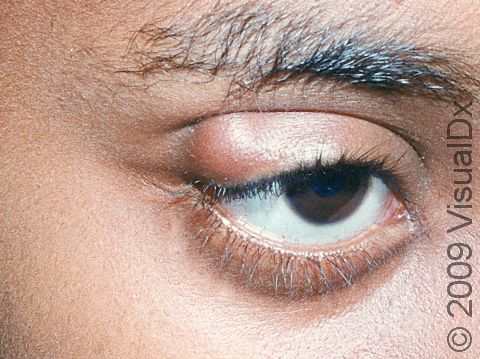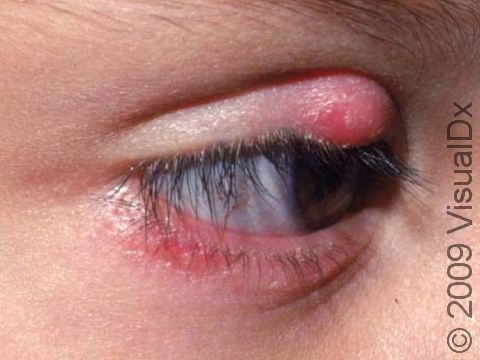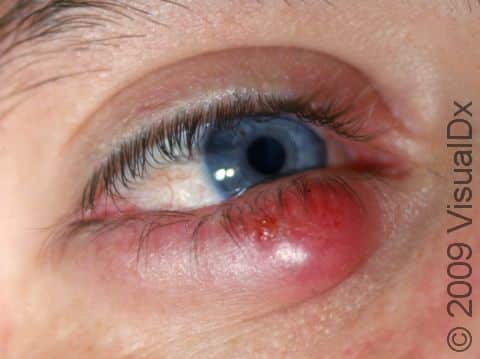Stye (Hordeolum and Chalazion)
A hordeolum, commonly known as a stye, is an inflamed lesion of the eyelid. Styes can occur on the edge of the eyelid or on the outer skin of the lid.
A chalazion is the chronic form of a stye, and its cellular makeup is different than that of a stye. A blockage of the oil glands in the eyelid leads to a chalazion.
These lesions are sometimes infected with bacteria.
Who's At Risk?
Styes and chalazia are extremely common. Your child is more likely to get styes or chalazia if they are prone to:
- Dry skin or seborrheic dermatitis (dandruff).
- Blepharitis (inflammation of the eyelids).
- Rosacea.
Signs & Symptoms
Styes appear as the rapid development of a pustule (pus-filled lesion) or swelling on the edge of the eyelid or on the lid itself. Chalazia are more of a rounded lump, called a nodule, and feel harder to the touch.
The child may also experience:
- Pain in the eye.
- Redness of the eye.
- Discharge from the swollen area.
- Tenderness in the area.
- Tearing.
- Very mild blurring of vision.
- A burning sensation in the area.
- A scratchy feeling in the eye.
- Drooping of the eyelid.
- Crusting of the eyelid edges.
Self-Care Guidelines
Apply very warm compresses 4-6 times daily until there is no more drainage from the stye or chalazion. The compresses must be hot enough to help drain the growth yet not so hot as to burn the very delicate eyelid skin.
Good lid hygiene is important. Wash eyelids daily with diluted baby shampoo or commercial lid scrubs / wipes.
It usually takes 5-7 days, at most, for the problem to resolve.
Over-the-counter ointments or drops have no treatment value.
Treatments
Treatment may involve:
Visit Urgency
Seek medical care for the child if:
- The eyelid is swollen shut.
- There is no improvement after using very warm compresses 4-6 times daily for 5-7 days.
- There is pus or very thick drainage from the eye.
- Pain or tenderness is increasing despite regular use of compresses.
- The swelling is increasing.
- The eyelid feels hot to the touch.
- The child develops a fever.
- The child experiences vision changes, such as double vision.
Recurrences are frequent, especially at the same location. However, recurring styes or chalazia without other related factors suggest possible serious disease, in which case it is important to seek prompt medical care.
References
Horton JC. Disorders of the eye. In: Loscalzo J, Fauci AS, Kasper DL, Hauser SL, Longo DL, Jameson JL, eds. Harrison’s Principles of Internal Medicine. 21st ed. McGraw Hill; 2022.
Singh M, Whitfield D. Hordeolum/Chalazion. In: Knoop KJ, Stack LB, Storrow AB, Thurman R, eds. The Atlas of Emergency Medicine. 5th ed. McGraw-Hill; 2020.
Last modified on June 24th, 2024 at 9:05 am

Not sure what to look for?
Try our new Rash and Skin Condition Finder


